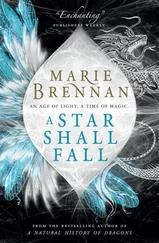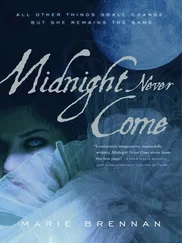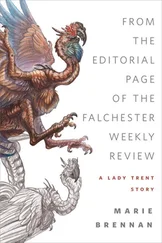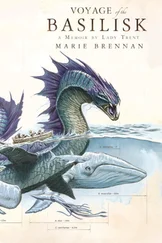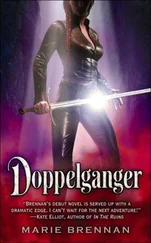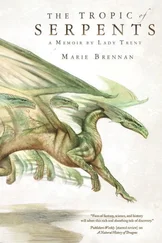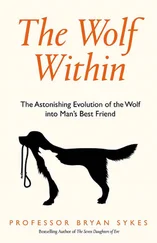“I am not asking where your eggs are,” I said hastily, thinking of Zam’s hostility. She was not so wary of me as she had been; but she still did not entirely trust me, and I wished to avoid provoking her. “But I am curious—am I right in thinking you must be very careful of the conditions in which the eggs are kept?”
This was a thing that had perplexed me since I compared the hatching grounds on Rahuahane to those in the Labyrinth of Drakes. Given the sensitivity of draconic eggs, how could the Anevrai have bred their own species in such disparate environments?
Part of the answer went a long way toward explaining why we had long mistaken firestone for an ordinary mineral. Underground chambers enjoy far more stable temperatures than those above; though Ruzt did not say so, I felt certain the Draconeans of the Sanctuary incubated their offspring inside the mountains, insulated from the killing cold of the outside. Whether they had one hatching ground or several, and whether any of them were in that temple carved into the side of Anshakkar, I did not ask.
But however deeply one burrows into a mountain, the Mrtyahaima was not the Broken Sea. My error, I eventually realized, lay in thinking of the Draconeans as a uniform species, bereft of variation. This is not true of humans, who vary a great deal across the world; why should it be true of Ruzt’s kind? Of course she had never seen her ancient kin, and had no proof of the ways in which island Draconeans had differed from those in the desert. But she agreed with me that such variation was quite likely, for she averred that too much warmth during incubation was “bad” for the resulting offspring. While cold in too great a degree killed them in the egg, heat might produce perfectly healthy hatchlings… who would then perish in their first hibernation.
My readers may also be wondering how they had maintained their hybrid nature, after countless generations cut off from all human contact. Many gruesome stories have circulated in answer to this question, all upon the theme of Dreadful Human Sacrifice: they kidnapped Tser-zhag and Nying and others from around their borders with which to feed their ravenous eggs; or they kept a stable of human slaves bred and slaughtered for that purpose. One especially unpleasant version of that latter said the last of their slaves died off not long before I arrived, and the entire scheme to use me as their ambassador came about because they needed to replenish their stock.
It is all nonsense, of course. The creation of the Draconeans before the dawn of their civilization may have required human blood—offered by ancient humans as part of their primitive rites—but once their population was established, they bred true. They had no need for special conditions to ensure a new generation of dragon-headed bipeds; they had only to protect their offspring against factors that might cause harmful mutation.
When I said something about this to Ruzt, though, I met with an odd reaction. It took me some time to find out why. Finally I asked her, “How do you believe your kind came to be?”
“How do you think your kind came to be?” she countered. I think she meant this partly as a challenge, for my questions had nettled her; but she also meant it as a way of ensuring she understood what I was asking.
It had the effect of making me realize the question was more complicated than I had thought. “We have many different stories to answer that,” I said at last. “Religions around the world each tell their own—that the first humans were carved out of trees, that we were made from the body of a sacrificed god, that a bear became human after many long trials. The religion I was taught as a child says the first man was made from dirt, and the first woman from his rib. But people like me—scientists—” I used the Akhian word; it had no parallel in her tongue. “They have established that we descend from apes. Do you know apes? Or monkeys?”
She did not, as there were none in the Sanctuary or its surroundings. “They are very like humans,” I said, for lack of any better description. “Much as mews are somewhat like you—though the differences there are much greater.”
Ruzt accepted this, as if it were only natural. “Of course mews are like us. But your scientists are wrong. You do not descend from apes.”
I could not restrain my eyebrows from shooting upward. “Oh? Where do we come from? And how do you know such things, when you have never spoken to a human before me?”
“Like mews, you descend from us,” Ruzt said. “Draconeans were born of the sky: the sun’s heat made wind, and the wind took solid form as four sisters, and the scales they shed became the mountains. The weight of the mountains dragged the sisters down, and they wept to lose their flight, which made the waters of the world. When they bathed for the first time, new creatures were made: the water of their mouths made the first brother, the water of their fronts made humans, and the water of their backs made dragons. We usually say mews, but I think it means the other kinds of dragons as well.”
This tale astonished me enough that I was rendered temporarily mute. It had a certain poetic logic to it: the back, which featured both wings and larger, more prominent scales, was more obviously draconic, while the front, which had a more human configuration, bore a stronger resemblance to my own species. And her comment about the weight of the mountains dragging the sisters down almost sounded like a mythic explanation of gravity. As origin stories went, I quite liked it.
But not only was it scientifically inaccurate, it was not the tale I had seen depicted on the wall of an ancient Draconean temple.
“That is why you were the subjects of the Anevrai,” Ruzt said, clearly reading my hesitation and disbelief. “Because you came from us.”
One of the benefits of limited fluency is that one is forced to stop and consider one’s words before speaking them. “The Anevrai told a different tale,” I said at last. “I have been in an ancient hatching ground, one left untouched since the Downfall. It depicted a dragon egg being bathed in blood to create a Draconean. And my own research supports the notion: changes in the environment of an egg can provoke all manner of mutations, many of them detrimental, but some successful—such as a dragon-human hybrid.”
(Rendering that argument into her tongue took approximately eight times as long as it appears here.)
“But where did dragons come from, if not from us?” Ruzt was obviously skeptical.
“That is a very good question, and one I would like to answer. From some kind of reptilian relative, clearly—but when and how your unique mutability arose, I cannot say.”
We argued a great deal over this in subsequent days. I was not surprised that Ruzt might have difficulty accepting the theory of evolution; she had never dreamt of such a thing before I spoke of it, and it was not well accepted when first introduced among humans, either. (Indeed, there are some who do not accept it today, despite an ever-growing body of evidence in support.) Challenging someone’s deeply held beliefs is a difficult thing to do, for it threatens to tear away the foundations upon which they have always stood.
I think Ruzt would have dismissed my words out of hand were it not for the fact that I could cite Anevrai artwork to support my point. It was peculiar for me to realize that her forebears were almost as mythical to her as they were to me—though it should have been obvious that thousands of years, a cataclysm, and continual flight into ever more remote parts of the globe would not leave a culture unchanged. I had seen more of the remains left behind by her ancestors than she had. But however mistily they might be recalled, the Anevrai were a name to conjure with: if they had believed they came from the influence of human blood on dragon eggs, then perhaps it might be true.
Читать дальше


